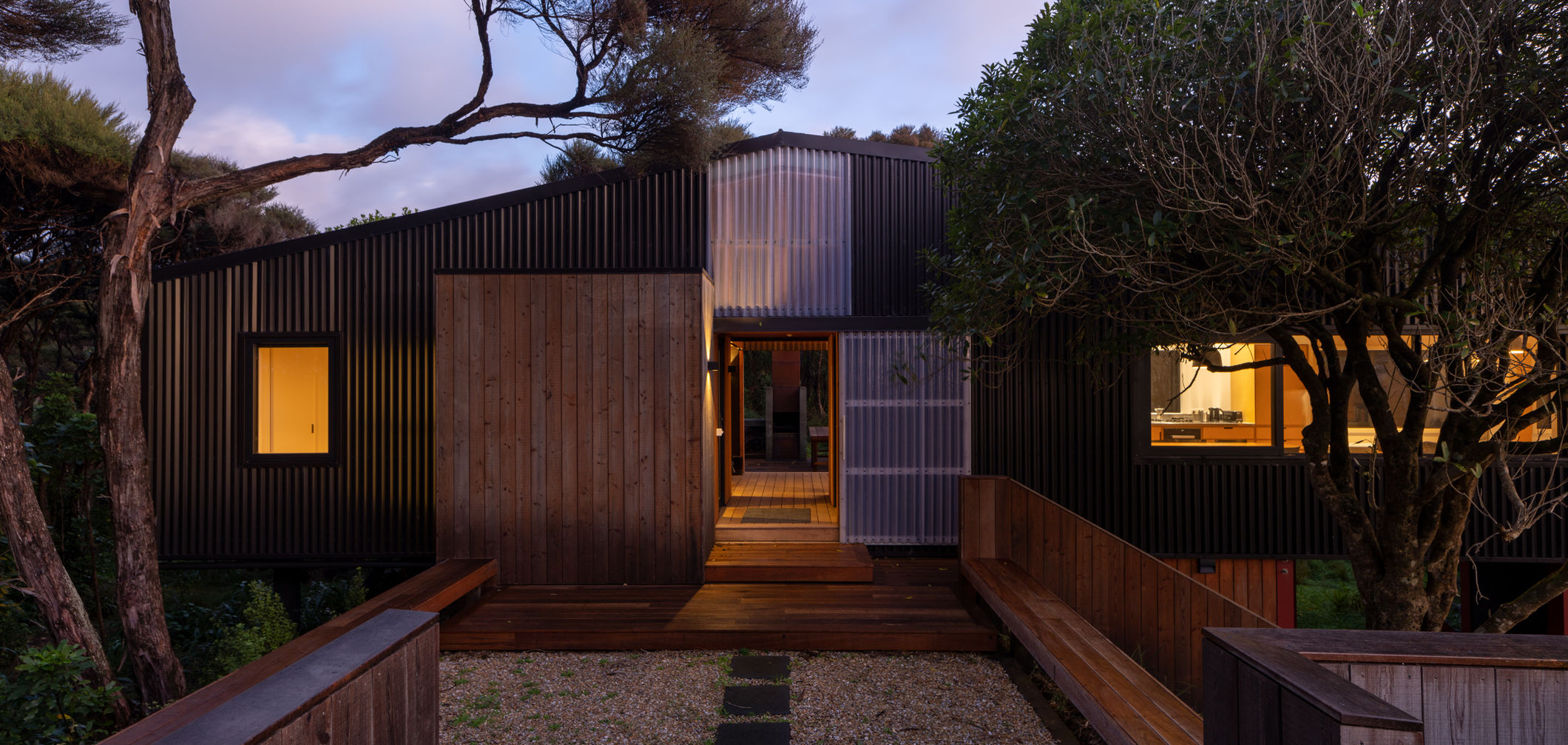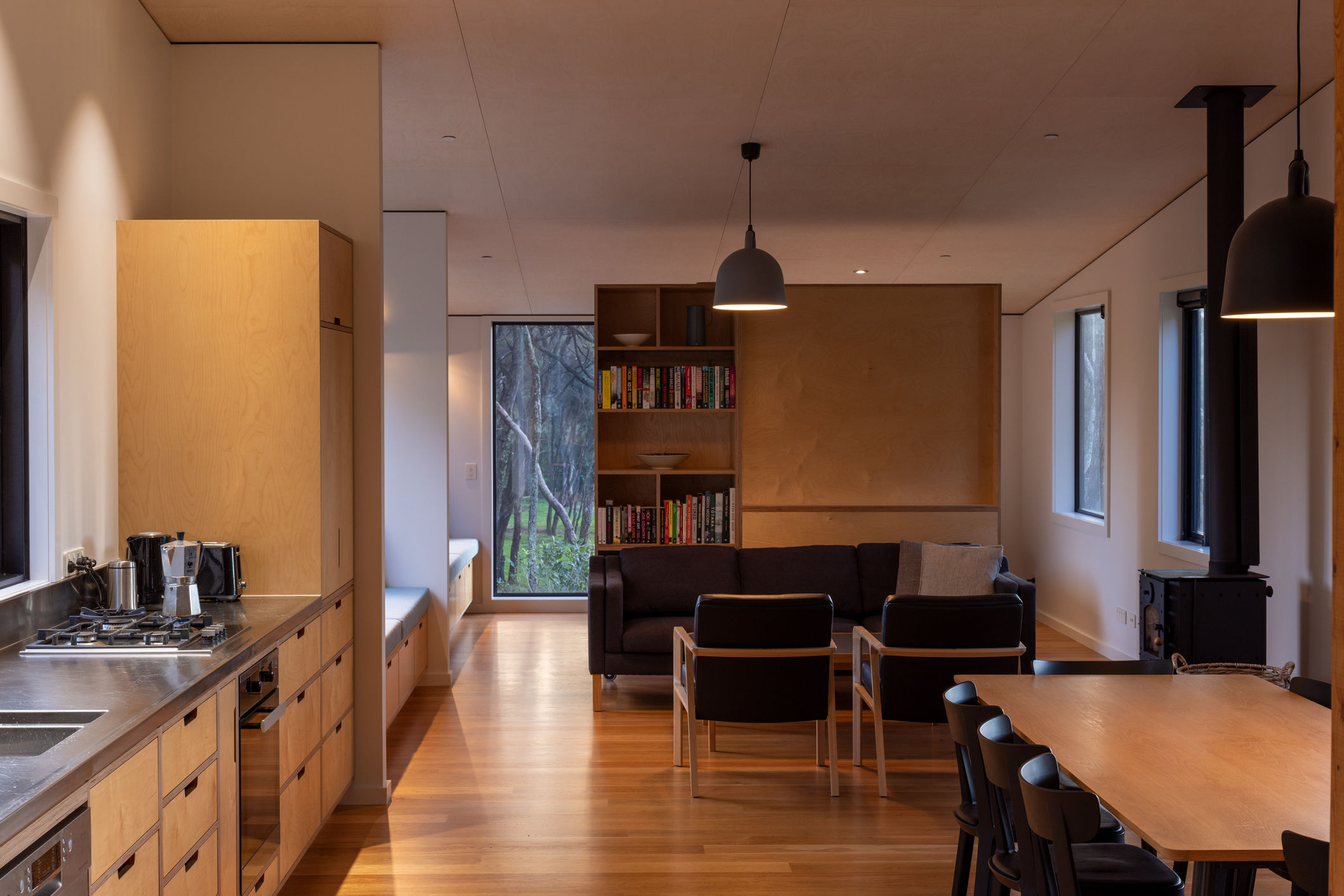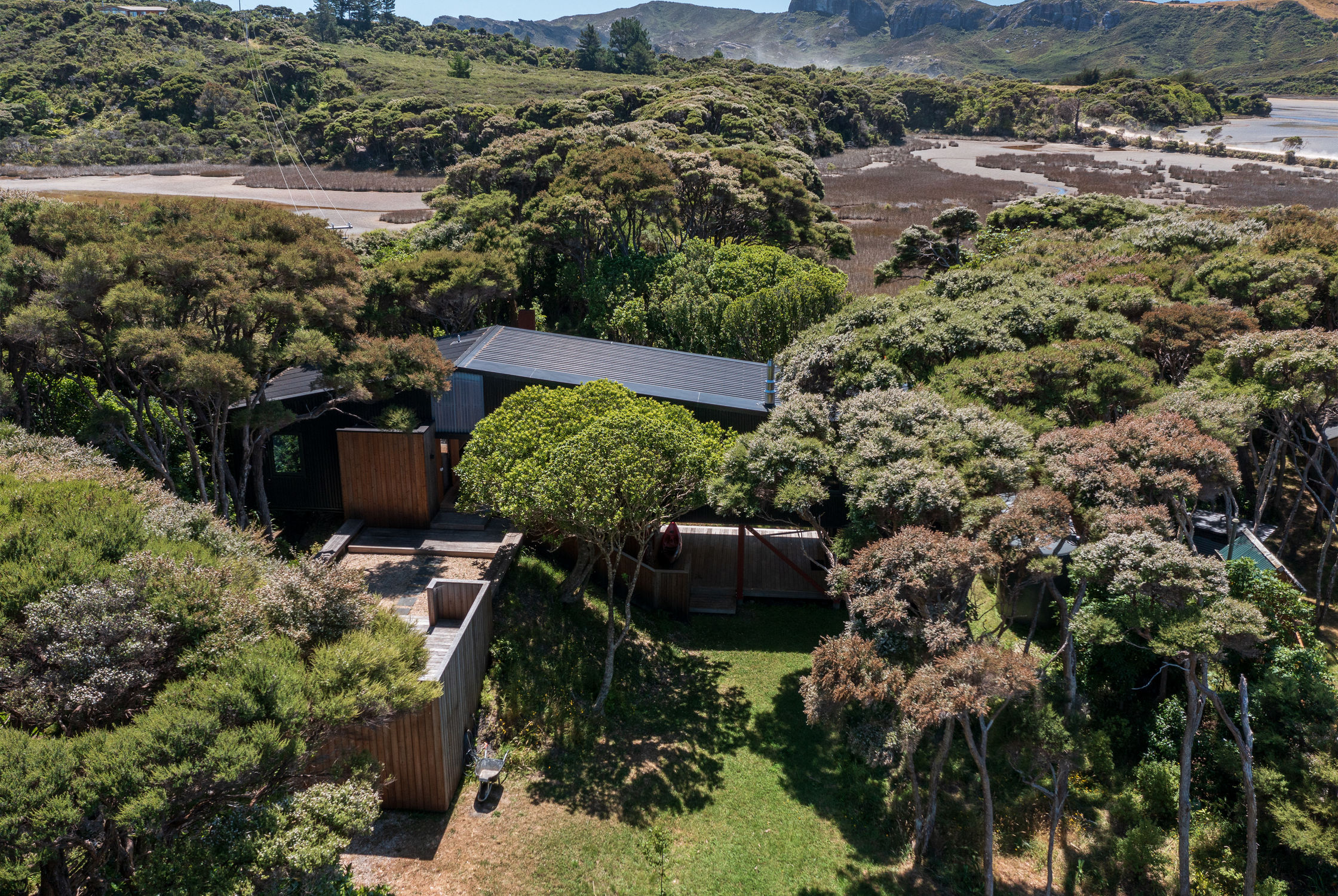
Pūponga Bach
| Residential |
Pūponga Bach is situated on a narrow stretch of coastal land between the open Mohua/ Golden Bay and an inlandestuary.
This northwestern corner of Te Waipounamu the South Island is where the dramatic west coast landscape swings sand around to form Onetahua/ Farewell Spit and the sheltered Mohua/ Golden Bay to the east.
Traversing the site is an historical rail embankment that, once supported a small rail line that delivered coal from an inland mine out to a finger wharf in the bay. The coal stopped in the 1950’s and the redundant embankment has been reclaimed by kānuka forest. Seen as a development hindrance by others, this unique feature, and the history it represents, attracted our clients to the site.
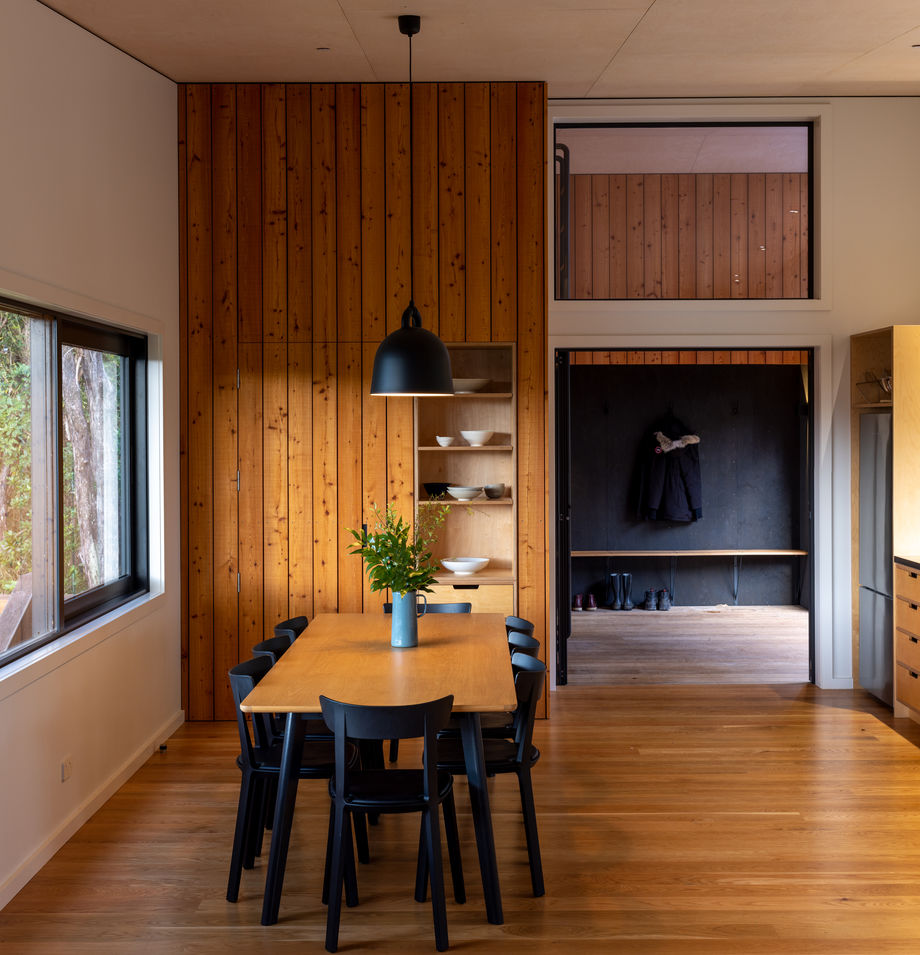

The brief called for a discrete intervention that respects and engages with the distinct setting of rail embankment, kānuka forest, coast and estuary and provides a modest retreat for the Wellington-based owners, that could also accommodate extended visits from multiplegenerations.
The design response is a 22m x 5m light-weight structure placed lightly across the raised rail embankment. The elevated main level, accessed from atop the embankment, provides flexible living/ sleeping space to the north, and a main bedroom/ bathroom to the south. These spaces provide filtered views of the estuary and bay. A lower-level sheltered deck with bedroom pod connects to ‘lower ground’ establishing a base for overflow accommodation andcamping.
A sequence of open spaces along the escarpment ‘ridge’ extends through the centre of the house connecting the upper level with a range of living rooms, inside and out, and shaping the arrival experience along the escarpment.
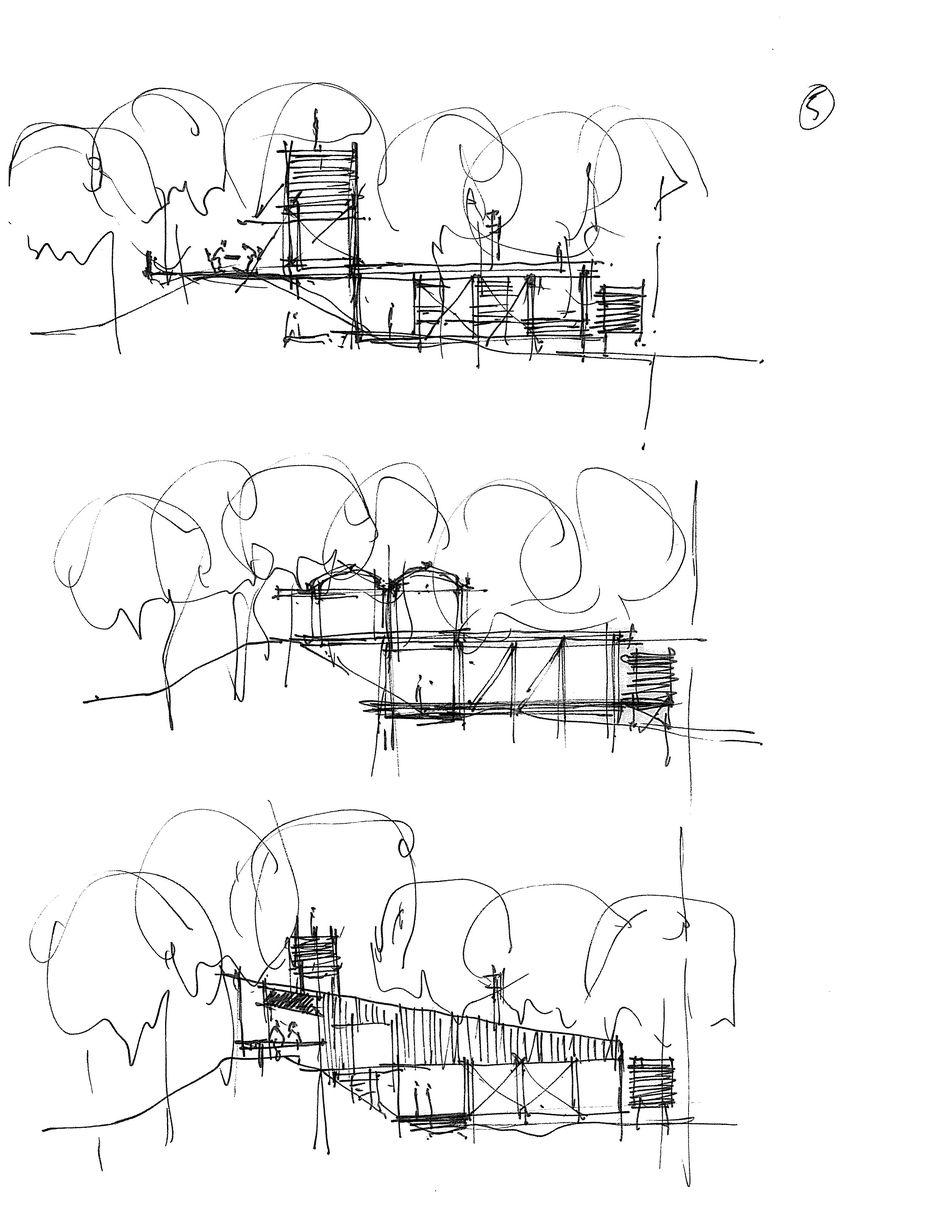
Interpreting the ‘bony’ industrial heritage of remnant coal mining structures ‘down the line’, the light timber frame structure clad in dark and translucent corrugate sits atop an expressed oxide-coloured braced frame. The building enhances awareness of the form and historic function of the rail escarpment and frames movements and viewpoints that offer new experience and appreciation of this beautiful old working landscape. On a site used previously for the extraction of coal, this project provides a platform for new habitation for multiple generations in a transitioning environment.
Featured in Here Magazine Issue 24 and Cape to Bluff, A survey of residential architecture from Aotearoa New Zealand By Simon Devitt, Luke Scott and AndreaStevens.
